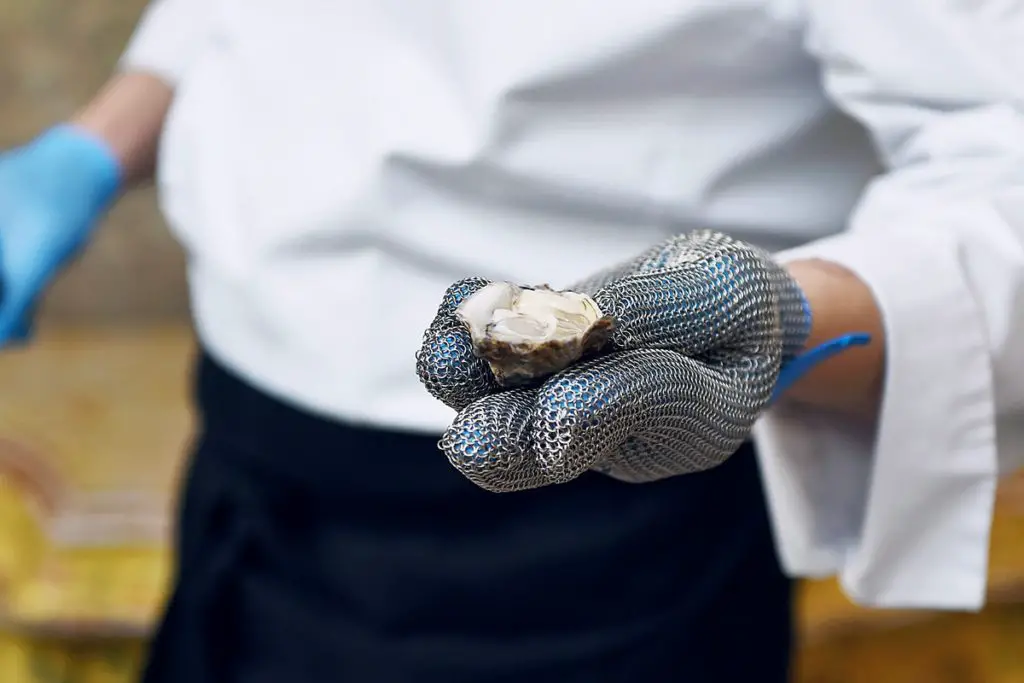The oyster is a seafood delicacy that is unlike pretty much any other kind of food out there.
Not only is it food that tastes a lot better than it looks to most people, but it’s also eaten straight from its shell.
In fact, Just about the only other kind of food that even compares to oysters, both in its taste, and how it is eaten at a dinner table, are other shellfish and kinds of seafood, like lobsters and crabs.
However, as freshness is often key when it comes to seafood, they are often kept alive right up until the moment that they need to be prepared for a meal.

For animals like lobsters, this typically means cooking preparations boiling them whilst they are still alive.
This has led to some contention and questions about how they should be treated during this time, especially if they feel pain and discomfort during this process.
There are even movements and legislation in some parts of the world that are looking to take this new information into account.
All this is to say that when it comes to a creature’s wellbeing if it is destined for the dinner plate, many people have a lot of questions about oysters.
Like, for instance, if they might also feel some kind of pain, or if this is the case. Well, that’s what this article is here to discuss.
Whilst the science and the research is still ongoing, we can at least discuss what has already been found, what that might mean for us and our favorite mollusks and other seafood, and how they might feel.
So, with that out of the way, let’s dive into the ongoing sea of this topic!
Oyster Behavior And Anatomy
To understand how and why oysters do feel pain, it pays to understand their lifestyle and biology, especially as that is what informs how they interact with the world, and by extension, how they might feel whilst being prepared for a delicious dinner.
First off, the anatomy and physiology of these creatures are very similar to all other bivalves.
That is, two shells that enclose one soft body part, called the mantle cavity, which houses the digestive tract, nervous system, etc.
These ‘shellfish’ are invertebrates, meaning that they don’t possess a backbone, and instead rely on muscles and ligaments to keep themselves upright.
The majority of their sensory organs, such as eyes, antennae, tentacles, gills, and siphons are located on their underside, where they can easily reach the water beneath them.
Being filter feeders, oysters will often wait for their food, most often plankton, to come to them; then, they extend their siphon tube, which is a muscular organ on the end of their foot, through the water and drag it towards them until they get a mouthful.
Once they’ve got their food, they will use the muscles within their shells to retract the siphon back inside itself, before then opening up the valves along the edge of their shells to expose their mouth.
They’ll then suck in water, using the suction generated to pull in more of the same plankton they were just feeding on.
Keep this ability to detect and interact with their wider environment in mind, as it is vital to understand how or if they feel.
Can Oysters Feel Pain?

So, we’ve established a little about an oyster’s feeding behavior and its anatomy. So how does this relate to feeling pain?
With this information, we should be able to get an idea of if or how they feel pain, right?
Well, the answer is a little more complicated than that.
Testing to see if or how an animal feels pain in the same way that humans do has always been a difficult subject to test and study, especially in species like bivalves, where they bear very little physical semblance to humans or other vertebrates, and cannot express ideas, behaviors, or feelings in the same way that animals like cats, dogs, birds, or even cold-blooded creatures like frogs, toads and snakes can.
Common wisdom would say that oysters cannot feel pain.
They lack a backbone for one, like all these animals we have just mentioned, as well as lacking a brain in the same way that most other animals have.
In vertebrate animals, the backbone and brain collectively control the rest of an organism’s body through these two elements of the nervous system.
Without these, oysters feel less like animals in the same way as fish, birds or mammals do, and seem more like collections of muscle that simply feeds on passing organic materials like plankton.
However, it is important to note that even without having a backbone, many invertebrates can and do act with intelligence and animal instinct, including soft-bodied animals.
Cephalopods such as squid and octopus, for example, are shown to have nervous systems that are incredibly developed, even without the presence of a backbone.
Octopus especially shows a level of intelligence that is unseen in the animal kingdom, outside of humans.
However, an oyster is not a cephalopod, so we need to draw our information from elsewhere.
Being a type of shelled mollusks, oysters and their bodily and nervous system functions are probably better compared to others similar to it, such as snails and slugs, being soft-bodied animals with hard shells as part of their anatomy.
In this case, snails, whilst having a pretty rudimentary nervous system with no backbone, and only having collections of neurons that control their body does still show aversion to stimuli that are painful or discomforting to them, something that would not likely bother an animal that didn’t feel some level of pain.
And given that oysters do still interact with their environment, knowing when to filter food and water, knowing when to withdraw for protection, it isn’t a stretch to assume that oysters at least know or understand the discomfort, if not outright pain, on some level, even if it isn’t to the same extent that humans do.
What About When They Are Eaten?
So, as we’ve established, oysters do likely feel pain and discomfort on some level, even if it isn’t in the same way most other animals do.
That might be a little off-putting for some people who just want to enjoy their tasty shellfish.
Still, it’s not like that’s necessarily the case when we’re eating them, is it?
Sure, shellfish like mussels might be alive when they are being prepared, but once they have been boiled, they are no longer alive, so they would not suffer pain as we ate them, right?
This might be the case for oysters that are prepared in some way, such as being broiled or grilled, but what about if they are eaten raw, as many oysters often are?
There is a lot of dispute on when a raw oyster exactly dies when it is eaten, whether it is when it is swallowed or chewed.
However, there is a theory that, because the ‘heart’ of an oyster is located near the adductor muscle in their shell, shucking, removing an oyster from its shell, is when they die.
So in theory at least, by the time that the oyster reaches the back of your mouth, the oyster is no longer in pain.
The idea that an oyster might still be alive when it touches your lips might make some people choose to eat raw oysters that are dead by the time they are on your plate.
And whilst eating a dead oyster isn’t necessarily bad for you, it is very possible to contract some kind of serious food poisoning from a dead oyster, especially when you consider how even eating a poorly-prepared live oyster can cause catastrophic health issues.
Conclusion
So, that’s the long and short of it. It isn’t unreasonable to assume that oysters feel something when being prepared for eating or being eaten raw.
But the exact nature of that feeling is up for debate.
However, one thing is certain: oysters don’t just go out and try to bite things without any knowledge of where it hurts, nor do they have the ability to consciously experience pain (if they did, we’d expect those oysters to avoid all sorts of potentially dangerous situations) – so it seems likely that oysters do indeed feel pain, albeit on a much more limited scale than humans do.
